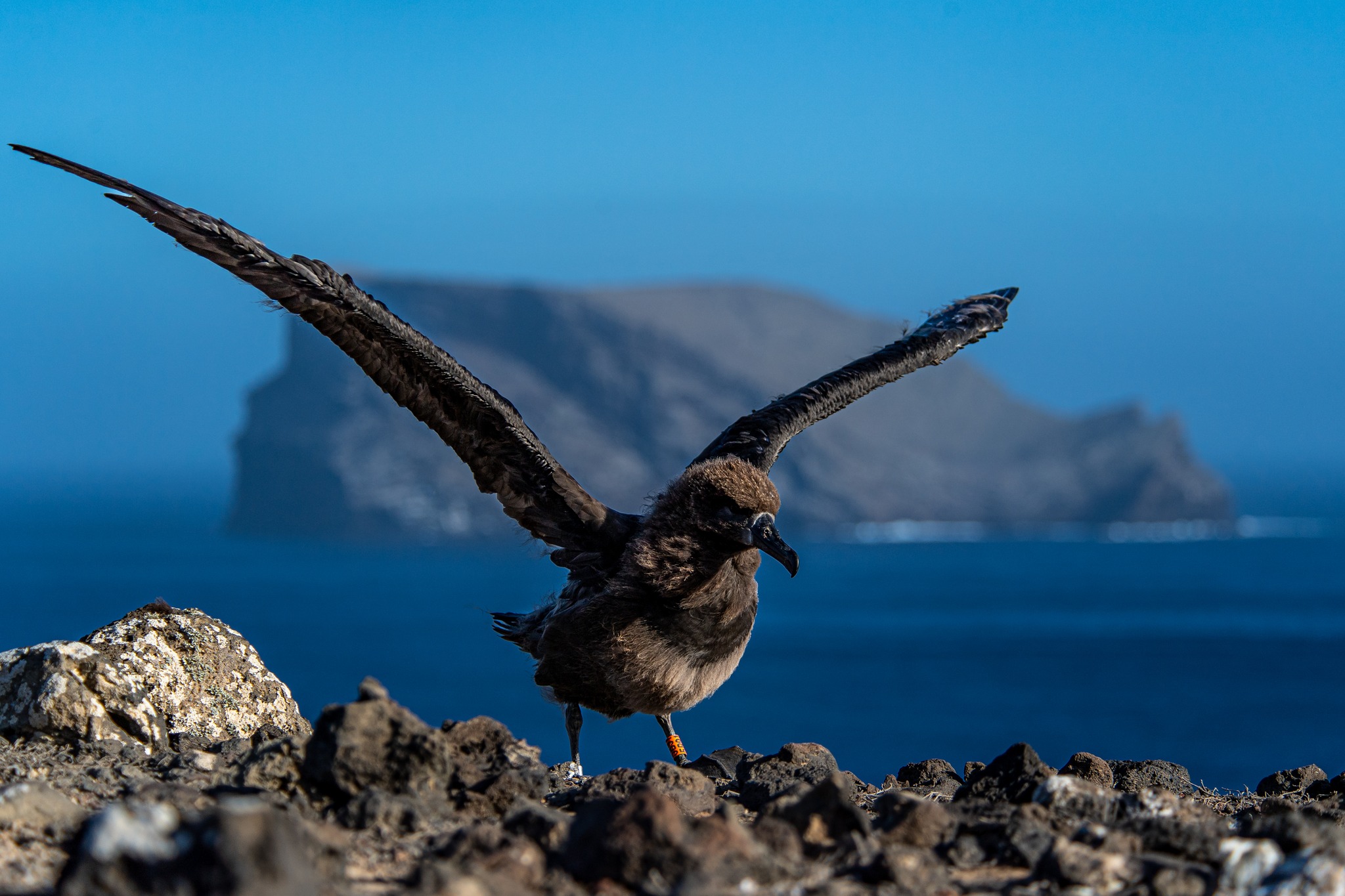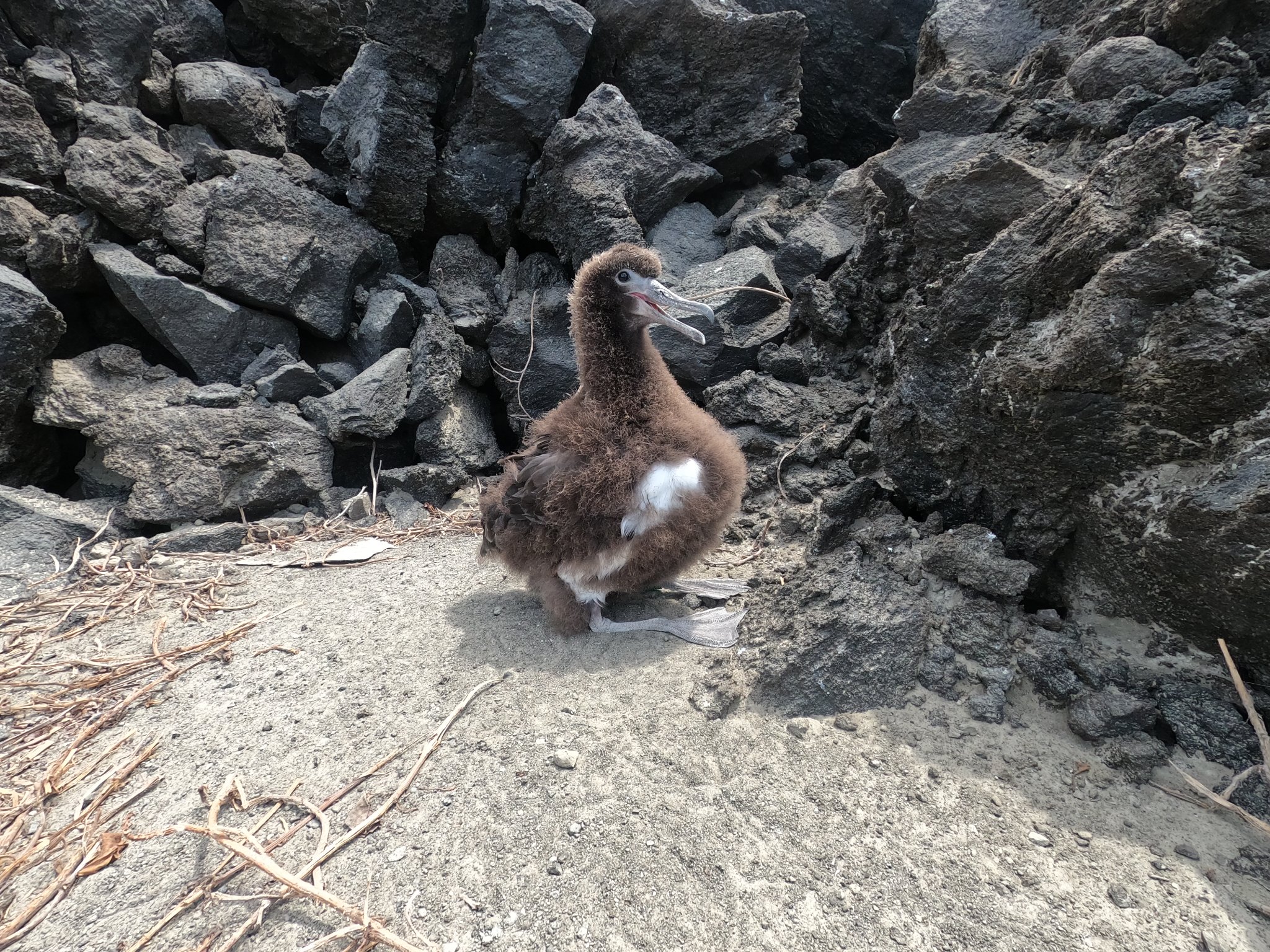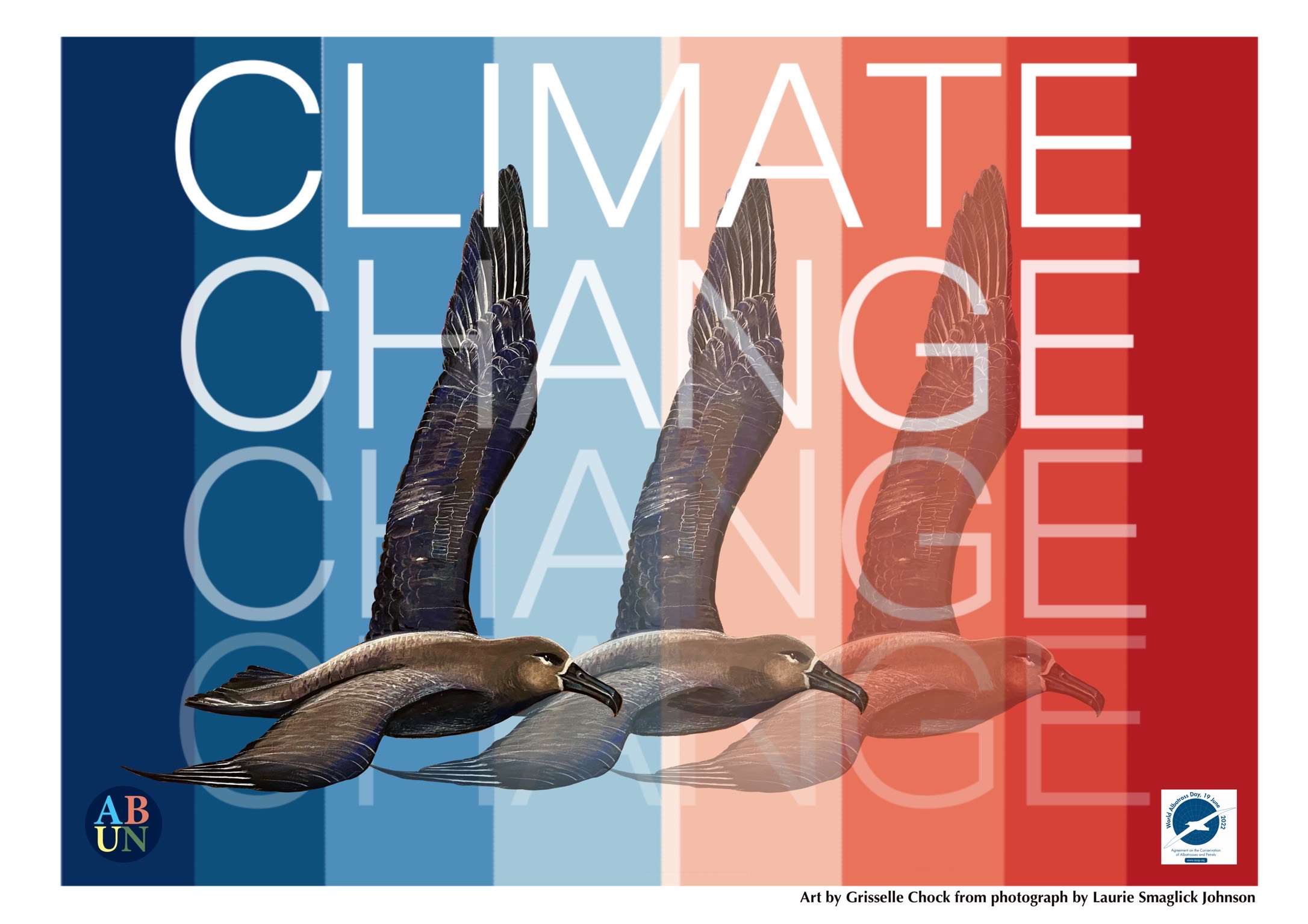
All the way from Midway Atoll as an egg: a colour-banded Black-footed Albatross prepares to fledge from Isla Guadalupe; photograph from GECI
Thirty-four of the 35 Black-footed Albatross Phoebastria nigripes chicks that were translocated to Isla Guadalupe, Mexico as eggs have now successfully left their foster nests. Thirty-six eggs were collected from nests on Midway Atoll where their habitat is at risk to predicted sea-level rise and increased frequency and severity of storm surges as a result of climate change. The eggs were flown to Mexico where they were raised by Laysan Albatross P. immutabilis foster parents on Guadalupe. This is the second season for the translocation project that aims to add the Near Threatened Black-footed Albatross to the list of birds that breed in Mexico; 27 chicks fledged in the first season (click here).
Hawaii-based NGO Pacific Rim Conservation, which is partnering the project with the Mexican NGO Conservación de Islas (GECI), writes on its Facebook page: “We are beyond thrilled at the success rate of this project and can't wait for these birds to return to Guadalupe Island in a few short years to start a new colony there. For more information on why we translocate seabirds from Midway to Mexico, check out www.islandarks.org.”
“Climate Change”: artwork by Grisselle Chock of ABUN after a photograph of a Black-footed Albatross by Laurie Smaglick Johnson
Meanwhile, over on Mexico’s Isla San Benedicto, part of the Revillagigedo National Park (a World Heritage site), four Laysan Albatross chicks have fledged this year following their banding in May. These are the first to fledge in three seasons of monitoring during which no pair was able to successfully raise chicks, mainly due to high depredation by native land crabs, as well as to landslides occurring in the breeding locality due to the volcanic ash floor from a 1952 eruption (click here). Laysan Albatrosses have bred historically on San Benedicto since 1990 with 17 nests reported in December 2003 (click here). However, this season’s fledging is stated to be the first success for the island.

A 2022 Laysan Albatross chick on Isla San Benedicto, photograph by Deneb Saldierna
GECI has reported on its Facebook page that over 25 years it has removed no less than 70 populations of invasive species from 39 Mexican islands. Federico Alfonso Méndez Sánchez, GECI Director, writes: “Our organization, founded in 1998, began with a special focus on north-western Mexico because here lies the largest concentration of islands and the largest number of troubled species ... along with, of course, the largest number of invasive species. The most problematic mammals are wild cats, rats, mice, sheep, goats, wild dogs, wild donkeys and rabbits. These have caused extinctions on islands all over the world and Mexico is no exception.”
John Cooper, ACAP Information Officer, 22 July 2022

 English
English  Français
Français  Español
Español 